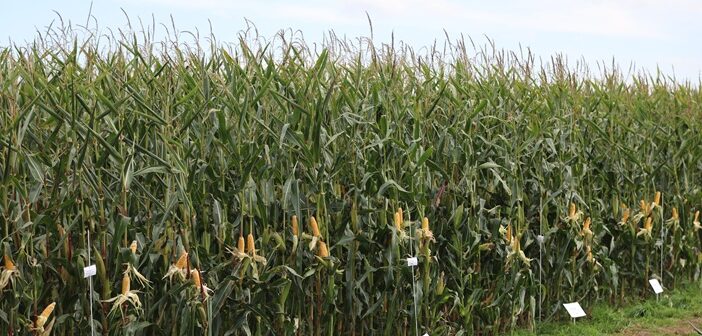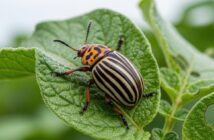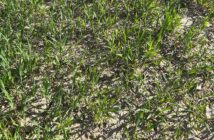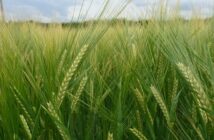Hutchinsons northern maize trials offer some pointers for arable growers looking for varieties suitable for AD.
Hosted by the Fisher family at Smalmstown Farm near Carlisle, over 20 varieties were trialled but some familiar names once again came out top, including best-seller P7034, with a freshweight yield of 52 t/ha and 30.6% DM, and 32.4% starch.
Other high dry matter varieties to impress were Bayer’s DKC 3204 and DKC 3218. DKC 3204 delivering 52/t/ ha freshweight, 29% DM and 32% starch, equating to a 15 t/ha DM yield.
DKC 3218 averaged 43 t/ha freshweight, 34% DM, and 31% starch, resulting in a DM yield of 14.7 t/ha. “It’s a variety that we’ve typically sown a bit later, but it looked good and everybody liked it, so this has given us confidence in the variety for next season,” says Hutchinsons agronomist, Jim Clark.
Another highlight, and one to examine more closely next year, is the new coded variety from Pioneer (P68106), which had the highest DM content of all varieties trialled this year, at 37.2%, with 29.8% starch. Although freshweight yield was not the highest at 40 t/ha (16.5 t/acre), the high DM content, meant total DM yield per hectare was close to the top performers.
“It’s an interesting variety for people either wanting to get fields off early, or those drilling later after a cut of grass. We trialled it under film this year, but will see how it performs in the open next season; a 10% difference in DM is a lot, so we think it could be one to grow in the open in the northwest.”
Ultra-early variety, KWS Temprano also impressed. It averaged 34% DM and 30.9% starch. “To get that level of dry matter in the open in Cumbria is phenomenal and will take some beating,” Jim adds.
P7326 also had a good year in the open, so may be worth considering. “It’s been around for many years, but is very reliable and remains a good management tool that will still have a place in some rotations,” he notes.
Yield benefit from placing fertiliser
Another trial at Smalmstown Farm once again highlighted the value of placement fertiliser in all maize crops, open and under film.
Three varieties were sown under film, plus two in the open, each one compared with and without Primary-P placement fertiliser applied with seed at drilling.
Overall, across all three varieties, freshweight yields were 5-6 t/ha greater where the placement fertiliser was used, while the uplift in DM yield was around 2 t/ha, worth the equivalent of £300/ha in extra value, says Jim.
“Given the favourable growing conditions this year, the benefit perhaps isn’t as big as we’ve seen in previous years, but it still more than pays for itself and is a far more efficient way of using nutrients than traditional DAP applications.”
He suggests greater focus needs to be given to maize nutrition, and is something next year’s trials may well focus more on.
One option being considered is to look at using a drone to apply foliar nutrition to the crop later in the season, beyond the point at which it is possible to pass through with a tractor. This builds on leaf testing this year, which showed noticeably higher nitrogen levels in the leaf of crops that received a foliar protected urea product, compared with those that only received granular nitrogen.
Given the success of using a drone for undersowing grass within standing maize this season, Jim is keen to explore other potential uses for the technology, such as with late-season nutrition.




